Metal Dolls
For more, see my book
With Love from Tin Lizzie; A History of Metal Dolls, Metal Heads … This was the
first book on Metal dolls, though copycat authors followed suit. I would really love to hear from other
serious doll scholars interested in how metal is used to make dolls. Jewelers
and sculptors welcome to comment, too! For the bibliography, see my book or ask me.
Max von Boehn in Dolls (1927) traces the genealogy of the
doll to the ancient Venus figures of the Stone Age which are over 40,000 years
old in some cases. Metal dolls, while still not prized in many important
collections, may have the richest history of all dolls. From the golden idols of the Inca and Aztec
to the toy soldiers of lead and silver and the Minerva, Juno, and Diana doll
heads of the 19th and early 20th centuries, metal dolls
form a fascinating collection. I hope
that this brief survey of their history will inspire others to take up the
“iron gauntlet” and add to the dialog.
Gold Statues of Deities, King Tut
Exhibit, Putnam Museum
Not too long ago,
I was in an antique shop in Kalona ,
Iowa
I could see some
sort of magazine article in her lap, and I thought this must be a page from a
catalog showing a similar doll. As I got
closer, I realized with a shock that the picture was the first page of an
article I had written on metal dolls eleven years before. The photo of the doll
was one of the examples from my own collection, and my father had taken the
photo.
This article will
focus on dolls made of metal, mechanical dolls, and dolls with metal
parts. It will address why these objects
are becoming popular in today’s popular culture and in the world of antique
collecting. The dolls discussed are all
different, but have one thing in common; some type of metal was used to create
them. Though some may feel that metal is
a cold and unsuitable material for making dolls, I think that Ayn Rand, author
of Atlas Shrugged, who create the
wonderfully warm and iridescent Reardon Metal, might agree that the effects of
using metal to make dolls can be both dazzling and beautiful.
Most readers are
familiar with idols made of gold, because of the Old Testament story of the
golden calf. In fact, people have used precious
metals to make dolls and toys for centuries in the Ancient World and in
Medieval Europe. Wealthy children often
had toys of silver and told and in Utopia,
Sir Thomas More mentions that citizens of Utopia
gave precious metals and jewels to
their children as toys. Celtic
literature is full of legends and myths of the importance of iron. At first the Celts used untempered iron for
spears, but because iron in this state is softer than bronze, the spears were
not successful.
Very unusual metal head. 1870s. Author’s archives and Public
Domain Image.
Metal Dolls in the
Ancient World:
The historian
Polybius describes a battle between the Gauls and the Romans in 223 B.C. where
the Gauls had long swords that bent with each blow and had to be straightened
out. The Romans won the battle by
attacking the Gauls before they could straighten their weapons. In Welsh and Manx mythology, iron is deadly to the Faerie, and
mortal who marries a Faerie woman and merely touches her with something made of
iron will watch her and all wealth she has brought him disappear. Later, the blood metal, iron,
became almost an object of reverence to Celtic tribes living around 700 B.C. in
the Hallstatt period.
Ancient Egypt Benin
Medieval and
Renaissance Metal Dolls:
Mary I, aka,
Bloody Mary supposedly had a golden cup filled with gold coins on her first
Christmas. Silver rattles and marottes
were standard gifts for wealthy children during the fifteenth and sixteenth
centuries. It is, after all, a small
step form silver rattles with attached bells that resemble marottes, to dolls.
Silver doll furniture also graced the baby houses of the rich. I saw such furniture as late as 1978 at
Shreve, Crump, and Low, Boston Netherlands Poland
Not only toys,
dolls, and figurines of metal were created during these era, automata of metal
were created during The Middle Ages.
Dolls and puppets were also made of clay, and woodcuts from Hortus Sanitatus (1491) show doll makers
or puppet makers at work. Martin Luther used the term Tocke (Docken) as an
insult for a silly, but pretty woman.
Other dolls called puppets and mammettes were mentioned in William Turner’s Herbal (1562) and a woman in the court
of Elizabeth I received a “baby of pewter.”
In her book Automata and Mechanical Toys, author Mary
Hillier, who was also my friend, showed several medieval and Renaissance examples
of metal toys. One is a beautiful
mechanical doll that played a lute. Her
clothes are detailed and sumptuous, her face expressive and dreamy. According to Mrs. Hillier, this doll may
have been made by Gianello Della Torre.
The doll is from the Vienna
Kunst Historisches
Museum
An interesting
pair of lead dolls were fished out of the Thames
fairly recently. These are all lead, and
represent a man and woman in elaborate 17th century attire.
Metal
Dolls and Enlightenment:
The
eighteenth century saw the beginnings of the Industrial Revolution and with it,
the mass production of metal toys and dolls.
One Mr. Child operated a toy shop by old London Bridge
Besides
the fact that Mr. Child is appropriately named for running a toy shop, it is
interesting that shops catering to children existed at this time, when children
were socially treated and dressed as miniature adults and when doll houses and
other bibelots were for adult entertainment.
Mechanical Dolls:
Clown Displayed with Robots. Plastic and Metal Parts, Key Wound. He Walks when Wound UP. Japanese, c. 1950s-early 1960s. Photo Jerry
Lowe, Tsagaris Collection.
Crawling Baby, American. Brides Cup of Pewter,
made in the Same Style Since the 16th Century. German. Photo by Jerry Lowe. Tsagaris Collection.
The 19th Century:
Dolls with metal heads have existed
for a long time, but did not enjoy any popularity until the middle nineteenth
century. The three most famous
trademarks were Juno, Minerva, and Diana.
Probably, these heads were named for Greek and Roman goddesses because
they were meant to be beautiful, yet indestructible.
Joel Ellis Doll with Metal Hands and Feet, Courtesy,
paintmiata 54. Tsagaris Collection.
The mid nineteenth century saw the start of the American
metal toy industry, helped by the efforts of Edward Paterson in Berlin , Connecticut United States
Rare Black Minerva Doll
Head, Tsagaris Collection.
For
example, metal heads were initially popular because any dents in the heads
could be pushed back into place. Of course, doing so left chipped paint and
other imperfections. Metal used for
heads in the 1890's included brass, zinc and tin plate. The heads were mainly mass-produced in Germany
Very unusual
metal head with metal hands and feet, glass eyes, open mouth, holes in bottom
of feet and steel ball joints in a wooden body.
Perhaps French. We call her
Belinda. Courtesy, Kirsten
Anderson. Tsagaris Collection.
American
commerce was important to the manufacture of these doll heads; for example,
Minerva heads by Buschow and Beck of Germany were sold in the United States through A. Vischer and Co, New York , NY
20th Century Brass Doll Head Mold for a Vinyl
Baby Head. Courtesy, myoldjoys. Tsagaris
Collection.
Coleman Walking Doll with Metal Cage Body displayed in
front of a Modern Automaton. Photo by Jerry Lowe. Tsagaris Collection.
In 1912, Minerva advertised a doll
that shed real tears. I, however, have never seen one. I have seen a mechanical
doll marked Minerva, with metal body and limbs, including a Minerva head. Genevieve Angione shows and discusses in her
book All Dolls are Collectible a boy doll with the Minerva mark. The head is six and three-fourths inches in
circumference. The eyes are painted blue
and have white highlights and red dots at the corners and nostrils. The ears are molded and slightly
detached. The hair is brown, the body
stuffed with hair. The boy's hands are
chubby and bisque.
Very rare French metal doll heads are also
mentioned in doll sources. At least one of these, the elusive Huret metal head,
was manufactured by a woman. Her rival
firm, Rohmer, was also run by a woman who made dolls with metal bodies. The two became involved in a complicated law
suit over a zinc-bodied doll during the mid nineteenth century.
Two Minerva Heads on cloth bodies
with leather shoes, made up to be brother and sister. Courtesy, Ellen Marie
Manion. Tsagaris Collection.
Metal heads to
attach to doll bodies were made in Europe by
French and German makers, including Rene Poulin, Lucien Vervelle, Sommereisen,
Huret, Carl Heller, and Karl Standfuss (Juno c.1898 to 1930s).
German makers include Buschow and Beck, with the
afore mentioned Minerva helmet as their mark, Max Diddtich and Joseph Schon c.
1886-90, Robert Hiller 1887-90, Alfred Heller (Diana) 1901-1910. Furthermore, a 1903 Montgomery Wards catalog
advertised Minerva heads from $.25 for a head of 2 5/8 inches to $.75 for a
four-inch head. A four inch head was for
sale for $45.00 at a recent doll show, held November 10, 1996 in Davenport , IA.
Mint Minerva Head Dressed in the Costume
of the Black Forest . Doll to the Right is a
Modern Corkscrew Doll with Molded Head. Formerly, Rosalie Whyel
Museum
Of course, other companies besides Minerva were
making metal dolls at various times. One
twenty-three inch doll with a metal shoulder head has a wig, open mouth and
sleeping eyes. The doll is marked "Germany
Metal Frozen Charlotte type dolls regularly
appeared in Crackerjack boxes as prizes.
One such doll in the author's collection is attached to a baby
announcement card along with a metal stork.
It dates from the 1880's.
Metal Bodied German Doll with
untinted bisque head and hands. Courtesy, Theriault’s.
The United States USA Baltimore ,
MD
Metal Head, American,
with Slit for tying a Bow. Painted Eyes,
Open Mouth Molded Teeth. Photo by Jerry Lowe.
Tsagaris Collection.
Other unusual metal dolls represented young
girls or baby. At the LaSalle-Peru doll
show, held October 13, 1996, I saw three interesting heads at the following
prices. A girl's head, six-inches high,
with blue sleep eyes and painted, "flapper" type black hair in fair
condition was $45.00. Baby or toddler's
head, no wig, with sleep eyes, fair condition, was also $45.00. A complete baby doll, about 18 inches high,
with sleep eyes and old clothing, in good to fair condition cost $110.00.
Steiner, Bebe Gigoteur, Mechanical with Metal
Parts. Courtesy, Theriault’s. Nearly
identical to a Doll in the Author’s Collection.
I have an unusual metal girl in my
collection that is about seventeen-inches high.
The doll's body is cloth, her limbs composition. The hair is molded in a bob style with a
molded loop for a ribbon. The original
dress is of a taffeta, the print faded to a lavender color. The paint and features are in good shape,
though the doll was a good price at $75.00.
Dolls of this type are usually valued at $200.00 or more.
Baby Head of Metal with Flange Neck to fit on a Cloth
Body. Sleeping Metal Eyes. Tsagaris
collection.
Giebeler
Falk, under the name Gie-Fa, created a doll with an aluminum head. One version had a wooden body with a
phonograph. The doll was called
Primadonna and was created c. 1918-21. Other American Companies were Armor
metal Toy Stamping Co., 1922 and Horsman.
The Metal Doll Company, c. 1902, made dolls briefly of steel sheet
metal. This is the All Steel Doll, and
was distributed by George Borgfeldt.
1950s Automaton, papier mache and metal. 48 inches. He Once Graced a Christmas Window at Marshall
Fields, The Loop . Purchased at Vintage Rose
Antiques, Rock Island
The Edison phonograph doll, featured in Gaby Wood’s Book Edison’s Eve, appears with a bisque
Jumeau or Simon and Halbig head, but had a steel body with a phonograph. This
doll was first advertised in Scientific
American Magazine, c. 1890, a periodical still in production today. An actress provided the doll’s voice. It is possible to hear a recording of the
doll talking on The Internet today.
All metal babies
were sold in the 20s and 30s, wile other dolls had baby heads of tin with cloth
bodies and composition hands and feet.
Lead soldiers were still popular during this time. Ives walking dolls and mechanical toys had
heads, bodies, and metal parts, too.
Metal Dolls Today:
Modern dolls of metal appear everywhere as
puppets, charms, amulets, and props.
Some of these are considered "grotesque dolls," in that they
are the descendants of Cruchet's toy guillotine, made in 1810, a Sweeney Todd
penny-in-the-slot pier show of the nineteenth century, trolls, Frankenstein,
and the other monster dolls mentioned earlier. Hassenfield Brothers' The Intruder began to
appear on toy store shelves. Metal doll
utensils were also reappearing. A silver
plated bottle opener in doll form is currently made by Godinger of Italy. The front bottom hem of his gown reads
"BACCHUS," and the arms move up and down, operating a corkscrew
mechanism attached to his head. He is molded
and cast with grapes in his long tresses, with a chain and bracelets around his
neck and arms. His tunic is decorated
with grapes. His face bears a
realistically joyous expression. He
imitates figures made in Europe many years
earlier, especially during the Renaissance by Cellini and other masters. From India
Circa 1970, Metal Egyptian Doll faces
turned into Earrings.
Bottom L to R: An all metal doll from Burkina Faso
Japanese doll of iron, mid 20th
century, behind a 1960’s Japanese doll in modern Kimono; doll has wire
limbs. Back Row L to R: Large metal head
doll with painted features seated on the bed holding the female Bucherer
doll. Knight’s head of metal, Cloisonné
doll from China German American
Heritage Center
Dolls will continue to be made as
long as there are human beings to conceive of new designs for them. They will continue to reign predominantly in
the children's realm, though individual adults and museums will still collect
them as tangible artifacts of human history, miniature representations of
humanity for their respective ages.
Book
from the Author’s Collection reflecting an early 1970s trend.
Modern
Metal and Mechanical Dolls. Large Santa in the Center is All Metal and Key
Wound. Photo by Jerry Lowe. Tsagaris Collection.
Metal
dolls, while still not prized in most important collections, may have the
richest history of all. From the golden
idols of the Inca and Aztecs, to the toy soldiers of lead and silver and the
Minerva and Juno heads of the last century, metal dolls could form a
fascinating collection in themselves. I
you would like to learn more, please see our Flickr Page for more Photos,
“Metal and Mechanical Dolls”, https://www.flickr.com/groups/2801427@N20/. We also have a page “Antique Doll Collector,
https://www.flickr.com/groups/2820905@N21/, as well as two boards on Pinterest,
Antique Doll Collector Magazine and Antique Doll Collecotr Magazine Covers. Of
course, there is our blog, Antique Doll Collector Magazine Blog, and my book With Love from Tin Lizzie . . . To all who are interested in doll history and
doll collecting, Happy "Dolling," love, Tin Lizzie.
























































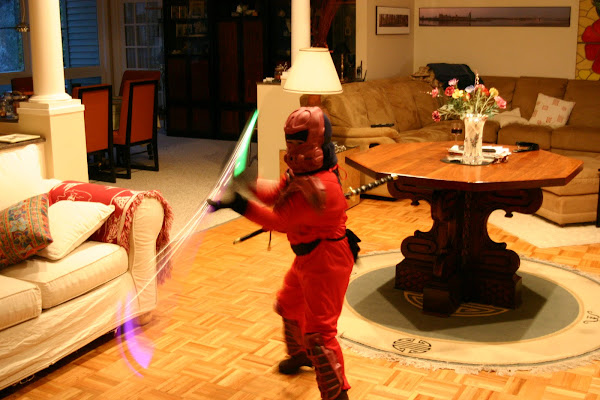

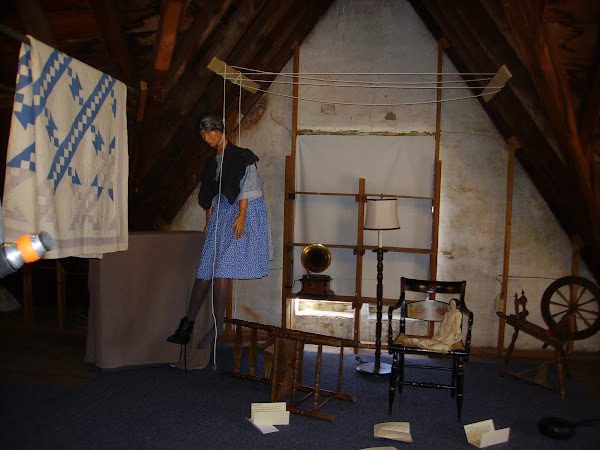
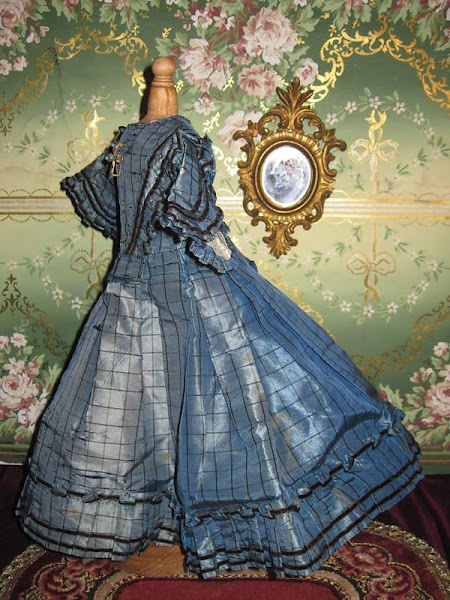wCWk~%24(KGrHqV,!h8Ew5GsnS3dBMUy3MzVPg~~_3.jpg)


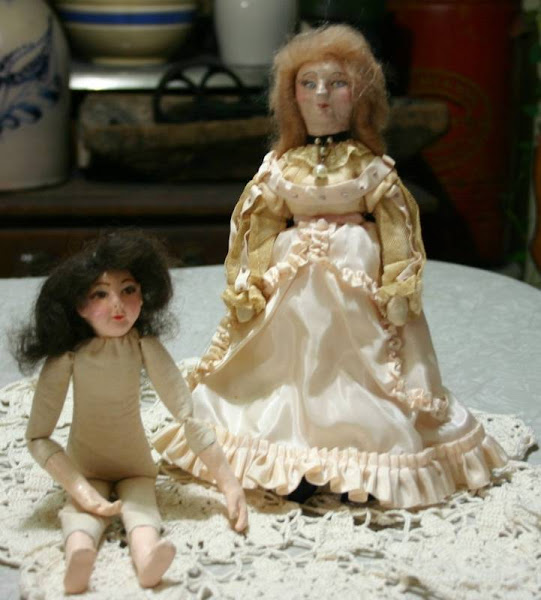


























































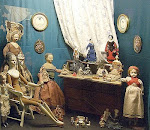




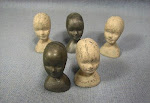



No comments:
Post a Comment